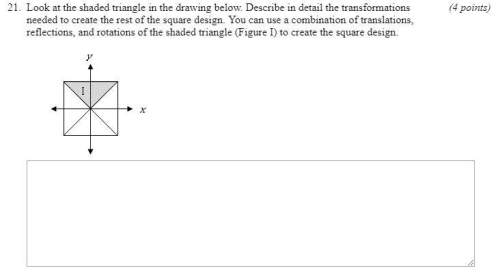
Mathematics, 19.05.2020 15:07 Arealbot
The Prestige dataset contains information about a sample of occupations in Canada from 1971, including the average yearly income (income), the average years of education people in that position have obtained (education), and the percentage of the workforce that are women (women). We want to know if education, women, and their interaction can predict average yearly income for Canadian occupations in this year.
a. Mean center the numeric explanatory variables in this analysis. (1 pt)
b. Build the appropriate linear model and make a residual plot. Which assumption appears to be violated? (2pt)
c. Let's suppose all relevant assumptions have been met. Run the general linear model for this analysis and interpret the main effects that are significant in the context of the problem (you don't need to cite the appropriate statistics). (2pt)
d. What does the interaction term tell you about the effect of years of education on annual income for these occupations? Be specific. (1pt)

Answers: 2


Another question on Mathematics

Mathematics, 21.06.2019 16:00
An equation of the line tangent to y=x^3+3x^2+2 at its point of inflection is
Answers: 3

Mathematics, 21.06.2019 23:30
Find each value of the five-number summary for this set of data. [note: type your answers as numbers. do not round.] 150, 120, 136, 180, 158, 175, 124, 162 minimum maximum median upper quartile lower quartile
Answers: 1

Mathematics, 21.06.2019 23:40
Find the amplitude of a sinusoidal function that models this temperature variation
Answers: 2

Mathematics, 22.06.2019 00:30
Arandomized controlled trial is designed to evaluate the effect of metoprolol in patients with heart failure. while preparing for statistical analysis, the researcher reviews some common types of statistical errors. which of the following statements is true regarding a type i error in a clinical study? a. the study is not significantly powered to detect a true difference between study groups. bthe null hypothesis is true but is rejected in error. c. the null hypothesis is false but is accepted in error. d. type i error is also known as beta and is usually 0.1 or 0.2. e. type i error depends on the study's confidence interval.
Answers: 1
You know the right answer?
The Prestige dataset contains information about a sample of occupations in Canada from 1971, includi...
Questions


Spanish, 14.07.2019 23:30


Chemistry, 14.07.2019 23:30






English, 14.07.2019 23:30





Biology, 14.07.2019 23:30

Mathematics, 14.07.2019 23:30



Mathematics, 14.07.2019 23:30




